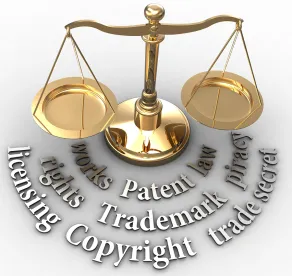Introduction
In July 2019, the Patent Trial and Appeal Board (PTAB) issued an Update to the PTAB Trial Practice Guide.[i] The July 2019 Update documents practices and procedures that the PTAB has found useful, and in some instances, summarizes or repeats practices and procedures from precedential PTAB opinions.
The US Patent and Trademark Office’s announcement of the Update identifies eight areas of additional guidance.[ii] This post discusses the first three areas, relating to additional discovery and oral testimony; the revised claim construction standard; and submission of testimonial evidence with a patent owner preliminary response. Later posts will discuss the remaining areas, relating to institution decisions on multiple petitions; motions to amend; motions for joinder; procedures on remand; and procedures regarding the PTAB’s default protective order.
1. Additional discovery and live testimony
The July 2019 Update provides more explanation of the different standards for additional discovery. In Inter Partes Review (IPR) proceedings, the “interests of justice” standard applies. In Post-Grant Review (PGR) and Covered Business Method (CBM) proceedings, the more liberal “good cause” standard applies. Discovery is more likely to be allowed in PGRs and CBMs because they cover issues under 35 U.S.C. §§ 101 and 112 as well as the prior art issues addressed in IPRs. Also, because PGRs have to be filed within nine months of patent issuance, they tend to be more contemporaneous than IPRs or CBMs such that information may be more readily available to a patent owner and thus less burdensome to produce.
The Update elaborates on the standards for additional discovery under the more stringent “interests of justice” standard for IPRs, tracking five factors in the PTAB’s precedential decision in Garmin Int’l, Inc. v. Cuozzo Speed Techs. LLC, without which the Board would not consider the additional discovery to be in the “interests of justice”:[iii]
-
The basis for requesting discovery must be more than a possibility and mere allegation.
-
The discovery request must not seek the other party’s litigation positions and underlying bases for those positions (i.e. contention discovery is not permitted).
-
The requested discovery must not be reasonably obtainable by other means.
-
The discovery requests must be “easily understandable”.
-
The discovery requests must not be overly burdensome to answer; they should be “sensible and reasonably tailored according to a genuine need for the discovery”.
The Update notes two areas in which parties frequently have sought additional discovery: identification of real parties in interest and secondary evidence of non-obviousness. Narrowly focused requests for additional discovery on these issues may be permitted if appropriate, but a party seeking such discovery should be prepared to discuss the above-listed Garmin factors.[iv]
A patent owner may choose to seek additional discovery on real parties in interest from a petitioner because the petitioner alone may have information about entities whose relation to the petitioner could affect the Board’s decision on whether to institute a proceeding. For example, if one of the real parties in interest was sued more than one year before the filing date of a petition, 35 U.S.C. § 315(b) would prohibit institution of an inter partes review.
With respect to secondary considerations of non-obviousness, for example, a patent owner may choose to seek additional discovery from a petitioner regarding sales of accused products, because the petitioner alone may have data about sales of products that the patent owner has accused of infringement. The patent owner may wish to rely on that sales data as evidence of commercial success of the invention that the allegedly invalid claims cover.
The Update also notes that the Board may order cross-examination in front of an administrative patent judge (APJ), and may permit “live testimony where witness demeanor may be critical to assessing credibility”—for example, where derivation is at issue or where an inventor is antedating prior art references.[v] Live testimony also may be permitted where credibility of a fact witness is at issue. In the Update, the PTAB expresses the view that “the credibility of experts often turns less on demeanor and more on the plausibility of their theories”.[vi] Consequently, it would be rare for an expert to testify live before the Board, but less rare for an APJ or the Board to observe an inventor, whose testimony may be perceived as self-interested.
2. Application of the Phillips claim construction standard
The initial Trial Practice Guide issued when the PTAB was using the broadest reasonable interpretation (BRI) standard to interpret claims, saying that this approach “ensures that the public can clearly understand the outer limits applicants and patentees will attribute to their claims”.[vii] Now, of course, the PTAB uses the Phillips standard. The July 2019 Update includes language from the comments to the October 2018 changes to the Rules of Practice, reiterating that it will apply the same claim construction standards as the Courts. [viii]
The Update states that the Board will take into account claim construction rulings in other proceedings, and will give “appropriate weight” to those determinations.[ix] The Update also invites submission of such prior determinations, as well as submission of claim constructions from either patent owners or petitioners in Federal court or before the International Trade Commission (ITC). A party may include such submissions during the filing of a substantive paper (i.e. petition, preliminary response, or response). If claim construction determinations become available outside of the filing of those papers, a party can follow the PTAB’s rules on submission of supplemental information, and get the Board’s permission to submit the determination(s) and/or patent owner/petitioner statement(s).
Here, a practice tip to consider is that, where a party may have different PTAB counsel and litigation counsel, it would be important for litigation counsel to notify PTAB counsel promptly about any claim construction orders.
3. Providing testimony with the preliminary response
The July 2019 Update notes that the Rules of Practice now permit patent owners to submit testimonial evidence with a preliminary response. However, any “genuine issue of material fact created by such testimonial evidence will be viewed in the light most favorable to the petitioner solely for purposes of deciding whether to institute [the proceeding]”.[x]

The Update also permits patent owners to withdraw submitted testimonial evidence after the Board institutes a proceeding.[xi] In the event of such withdrawal, the declarant providing the withdrawn testimonial evidence usually may not be deposed.[xii]
If a patent owner submits testimonial evidence with a preliminary response, a petitioner may request leave to reply. The PTAB says that it anticipates that it will not grant leave in many cases, though, because of the short time the Board has to decide a petition to institute a proceeding.[xiii]
Providing testimonial evidence while a patent application is pending may be a way for a patent owner to get ahead of the need to submit such evidence in response to a petition before the PTAB. See my prior article on this topic, here. Such testimonial evidence would become part of the patent’s file history, and therefore would be part of the intrinsic evidence that the Board would consider. For a patent that the patent owner considers particularly important, and is likely to assert, it can be worth the additional up front investment to provide the evidence during prosecution, and have the evidence construed in a more favorable light.
More to come
In the next article in this series, we will address the next two items in the July 2019 Update: multiple petitions challenging the same patent; and motions to amend.
[i] Trial Practice Guide Update (July 2019), available here. (“July 2019 Update” or “Update”).
[ii] Trial Practice Guide July 2019 Update
[iii] July 2019 Update, p. 8. The Update refers to another precedential decision, Bloomberg Inc. v. Markets-Alert Pty Ltd., for guidance on obtaining additional discovery under the “good cause” standard.
[iv] July 2019 Update, p. 10.
[v] July 2019 Update, p. 12.
[vi] July 2019 Update, pp. 12-13.
[vii] 2012 Trial Practice Guide, pp. 38-39. That Guide also warned about using different applicable claim construction standards in different parts of the Office for related patents or patent applications. Id., p. 39.
[viii] July 2019 Update, pp. 14-15.
[ix] July 2019 Update, pp. 15-16.
[x] 37 C.F.R. §§ 42.108(c), 42.208(c).
[xi] July 2019 Update, p. 20.
[xii] Id.
[xiii] July 2019 Update, pp. 20-21.




 />i
/>i

